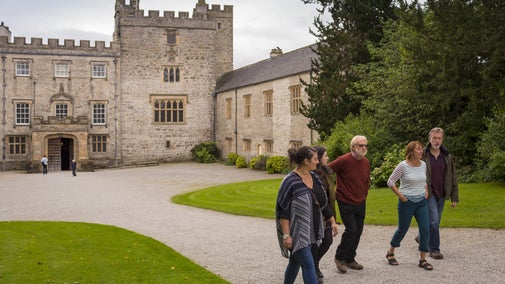
Where will you visit next?
Discover lots of gardens, historic houses, days out at the coast and more.
Home of Beatrix Potter, fascinating history, dramatic landscapes and – of course – plenty of lakes. Cycle, walk or sail through the unforgettable Lake District and discover its many delights.

Aira Force is a showcase for the power and beauty of nature; it’s a place to escape the ordinary.





There are hidden gems of history and wildlife along this post-industrial coastline


Looking for places to visit with the kids in the Lake District? Explore days out in nature, activities for all the family and places to spot wildlife all year round.

Plan your next family day out in the Lake District – seek out natural play areas, scramble over rocks and spot wildlife on your way. As the days lengthen and the weather gets warmer, spring provides a great opportunity to make the most of your membership, explore the new season and visit somewhere new.

Plan ahead for your next half term adventure; with wild play areas, arts and crafts and miles of lakeshore to explore, make it a school holiday to remember with the National Trust in the Lake District.

Tools, tips and guidance to help you make the most out of your trip to the Lake District and help us look after it.

Whether you’re looking to travel by train, bus, bike or foot, there are many places in the Lake District that you can visit without a car - here's the info to help you plan a car-free day out.

Discover the National Trust's countryside car parks in the Lake District.
Alongside our tenant farmers, the National Trust looks after 20% of the Lake District National Park, including England's deepest lake and highest mountain. We work to restore habitats for nature and to conserve the cultural heritage within a dozen historic buildings. Find out more about what the teams have been up to here.

Learn about the traditional farming practices in the Lake District and how the National Trust works with farm tenants to restore vital habitats, protect wildlife and support quality local produce.

Rivers are life forces. They’ve helped sustain ecosystems, cultures and communities for millennia, their quiet power steadily shaping everything from landscapes to place names. Find out more about the work the National Trust is doing with local partners, tenant farmers and other landowners in the area to help restore the Lake District's rivers and improve the water quality in lakes and tarns.

The Windermere Gateway programme is a unique opportunity for the National Trust to make a difference in Windermere and support the Lake District National Park Local Plan ambitions.
There are plenty of opportunities to get involved in our work across the Lakes

Find out more about volunteering for the National Trust in the Lake District. You could work indoors or outside, welcoming and guiding visitors, growing crops or managing woodland or building paths.

Join a supporter group in the Lake District to volunteer outdoors with other people and help us look after special places in the National Park.

A peaceful campsite less than a mile from the shore of Wastwater, perfectly placed for challenging bike trails and Scafell Pike, England’s tallest mountain.



A tranquil base in the heart of the Lakes, for a holiday walking and exploring the region’s crags, woods and waterfalls.

Lakeside or mountain-view pitches for tents and campervans, along with pre-pitched tents and pods, on Windermere, England’s biggest lake.
Delve into the Townend archive collection through these fascinating personal letters.
Can you discover eight of the birds that call Sizergh home? Take part in the Spring Bird Challenge this April.
A simple way to get fit, with a great community at its heart.
Come and wonder at the striking wildlife of the British Isles as portrayed by local photographers Rosamund and John Macfarlane.
Brought to Light contrasts the work of two of the Lake District’s great photographers: Herbert Bell, a chemist’s son from Ambleside, and Rupert Potter, father of the children’s author Beatrix Potter, in a never before seen way.
Enjoy a tour at Acorn Bank supported by a qualified British Sign Language Interpreter.
Discover the echoes of Acorn Bank's hidden industrial past in the woods.
This Earth Day, enjoy a guided nature connection walk with Wild Soul.

Discover lots of gardens, historic houses, days out at the coast and more.